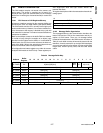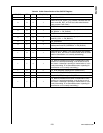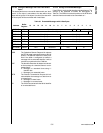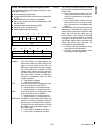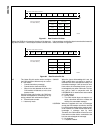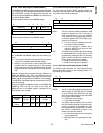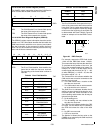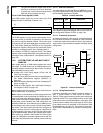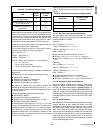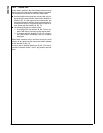
135 www.national.com
CP3BT26
INTERNAL If the Internal function is enabled, the CANTX
and CANRX pins of the CAN module are inter-
nally connected to each other. This feature
can be used in conjunction with the LOOP-
BACK mode. This means that the CAN mod-
ule can receive its own sent messages
without connecting an external transceiver
chip to the CANTX and CANRX pins; it allows
software to run real stand-alone tests without
any peripheral devices.
0 – Normal mode.
1 – Internal mode.
DIAGEN The Diagnostic Enable bit globally enables or
disables the special diagnostic features of the
CAN module. This includes the following func-
tions:
• LO (Listen Only).
• IGNACK (Ignore Acknowledge).
• LOOPBACK (Loopback).
• INTERNAL (Internal Loopback).
• Write access to hidden receive buffer.
0 – Normal mode.
1 – Diagnostic features enabled.
EIT The Error Interrupt Type bit configures when
the Error Interrupt Pending Bit (CIPND.EIP-
ND) is set and an error interrupt is generated
if enabled by the Error Interrupt Enable
(CIEN.EIEN).
0 – The EIPND bit is set on every error on the
CAN bus.
1 – The EIPND bit is set only if the error state
(CSTPND.NS) changes as a result of in-
crementing either the receive or transmit
error counter.
19.10.7 CAN Timing Register (CTIM)
The Can Timing Register (CTIM) defines the configuration
of the Bit Time Logic (BTL).
PSC The Prescaler Configuration field specifies
the CAN prescaler. The settings are shown in
Table 57
SJW The Synchronization Jump Width field speci-
fies the Synchronization Jump Width, which
can be programmed between 1 and 4 time
quanta (see Table 58).
Note: The settings of SJW must be configured to be small-
er or equal to TSEG1 and TSEG2
15 9 8 7 6 3 2 0
PSC SJW TSEG1 TSEG2
0
R/W
Table 57 CAN Prescaler Settings
PSC6:0 Prescaler
000000 2
000001 3
000010 4
000011 5
000100 6
::
1111101 127
1111110 128
1111111 128
Table 58 SJW Settings
SJW
Synchronization Jump
Width (SJW)
00 1 time quantum
01 2 time quanta
10 3 time quanta
11 4 time quanta



